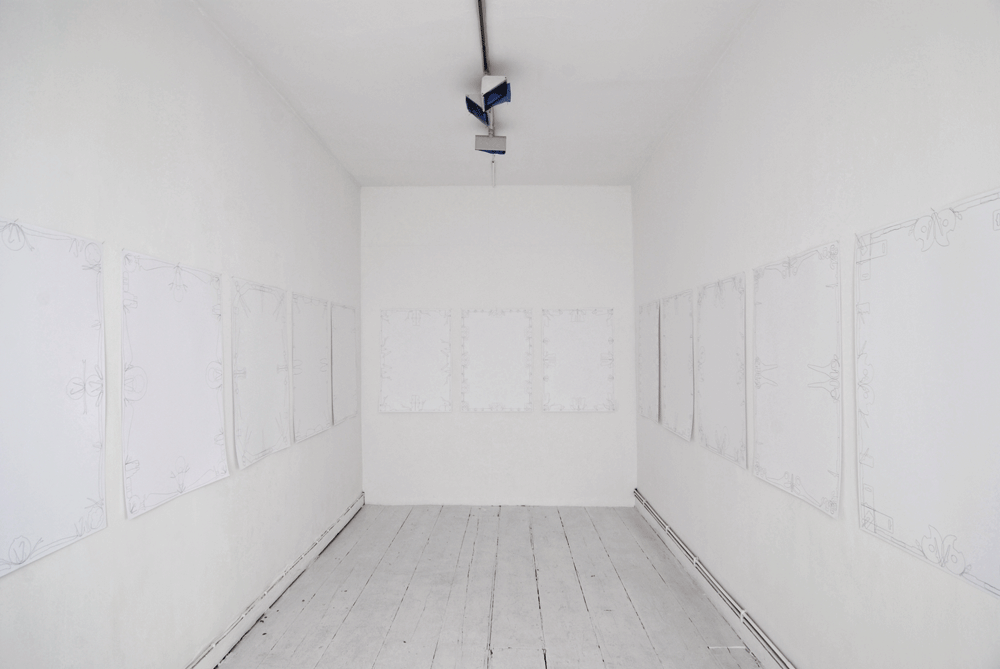Mira Sanders
FDC Satellite, Brussels, Belgium
FDC Satellite, Brussels, Belgium

Visual analysis and anecdotal descriptions converge in ‘Silent Letters’ (2009), the six video works at the centre of Belgian artist Mira Sanders’ exhibition ‘Invisible Lines’. A series of diaristic observations subtitling everyday scenes – cats darting over cobblestone paths and around beach volleyball games – spin travelogue commentary and light philosophy into epistolary entries that always refer back to ‘the line’.
The lines in Sander’s work are both everywhere and nowhere: nondescript scenes provide an occasion to talk about boundaries and borders, from the volleyball net bisecting the frame of Silent Letter 22012009 (2009) to a reference to hopscotch. Likewise, the choppy flow of pedestrians walking past policemen regulating traffic in Silent Letter 27042008 (2009) speaks to guidelines and boundaries of an invisible order. A rolling progression of texts – set against a black background in Silent Letter, # Quotations (2009) – further emphasize the elusiveness of subdivisions, shifting the focus from boundaries to the line as it is used to create perspective. In one quote appearing in the video, excerpted from ‘The Horizon: A See – change’, Johann Wolfgang van Goethe credits the ‘simple noble line’ of the horizon as gifting him with not only inspiration, but the capability of drawing himself into relation with his surroundings.
Relationships of scale are further explored in two black and white photographs of the hatched-line incisions on a cutting board in the artist’s studio next to crumpled bits of paper, soft balls of fibre and a spare cutting blade (Scale 1: 2500 [Studio #1 and #2], 2009). In contrast, a selection of punchy and playful drawings from ‘Le dialogue de sourds’ (Dialogue of the Deaf, 2005–ongoing) maps a conversation between images supplied by Sanders and accompanying texts added by art historian Marie-Pascale Gildemyn. There is no clear narrative in this humorous and sketchy series of vignettes that clarifies the purpose of the exchange, but it has lasted for six years. The drawing Paradis Artificiel. Paradis Perdu. Paradou (ill.3) (Artificial Paradise, Paradise Lost, Paradou [ill.3], 2005), for example, pairs an isolated palm tree with a brief note taken from a Wikipedia entry on an oasis.
Sanders takes an ambling approach towards thinking about lines, but she is right in the sense that most are imagined or invisible. In its best moments, Sanders’ epistolary mode of address approaches competent poetry – but a series of contour line drawings of overlapping and continuously touching workplace tools on view in a back room overextend the trope of the line in a bit of thematic overkill. These works refer to the edges and borders of objects in a far too literal sense, missing at least two key elements that makes Sander’s otherwise promising work so strong: the artist addressing the landscape and viewer as a foreign observer and the weaving of critical observations into imaginative fictions through correspondence.
























